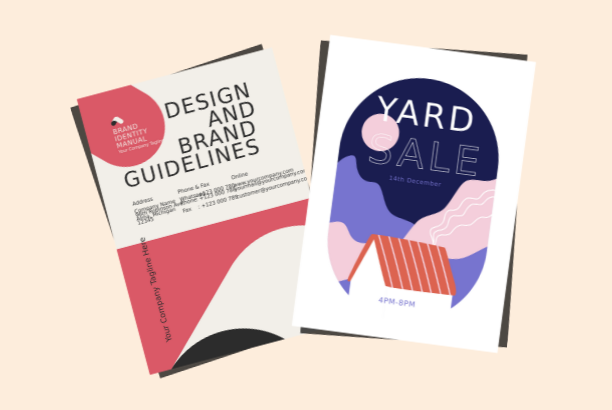White space, which is often said as negative space, is a basic element in graphic designing. This significantly impacts the effectiveness and aesthetic appeal of a design composition. Although it is named white space but does not necessarily have to be white; it simply refers to the absence of other design elements in a specific area. In essence, it is the space that surrounds and separates various elements within a design, including text, images, and other graphical elements.
Understanding the significance of white space in graphic design is crucial for creating visually appealing and functional designs. White space serves several essential purposes in design:
Visual Hierarchy and Organization
White space helps structure and organize content by separating and grouping design elements. By strategically incorporating white space, designers can guide viewers through the layout in a logical and intuitive manner, emphasizing important elements and enhancing overall readability.
Improving Readability and Legibility
Adequate white space around text blocks improves text readability and legibility, making it easier for viewers to absorb information. Proper spacing between lines and paragraphs reduces visual clutter and enhances comprehension, contributing to a more engaging user experience.

Enhancing User Interaction
White space plays a crucial role in promoting visual hierarchy and facilitating user interaction. By strategically placing white space around navigational elements, buttons, and call-to-action prompts, designers can direct users’ attention and guide them through the interface more effectively.

Drawing Focus on Key Elements
Utilizing white space allows designers to draw attention to specific elements or focal points within a design. By surrounding key elements with ample white space, designers can create visual contrast and make those elements stand out, effectively guiding viewers’ focus and reinforcing the intended message.

Promoting Balance and Unity
White space helps maintain balance and visual harmony within a design composition. By carefully balancing the distribution of white space and design elements, designers can create aesthetically pleasing and cohesive designs that resonate with viewers.
When applying white space in graphic design, designers should consider various factors such as visual hierarchy, text formatting, logical grouping of elements, and overall design cleanliness. By following best practices and leveraging white space effectively, designers can create visually compelling and user-friendly designs that effectively communicate their intended message.

